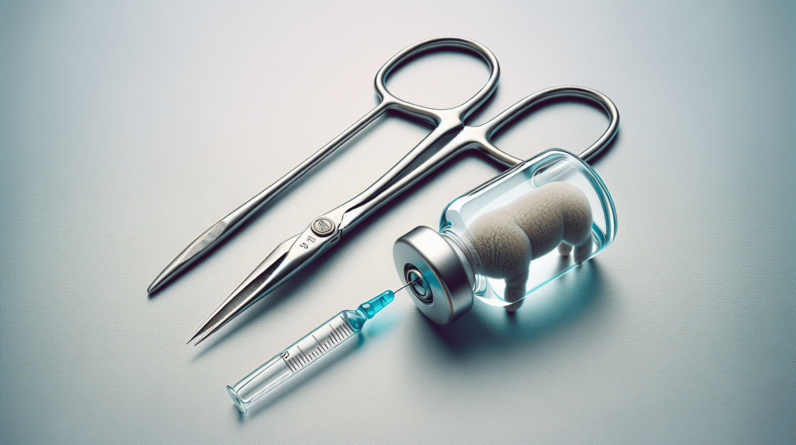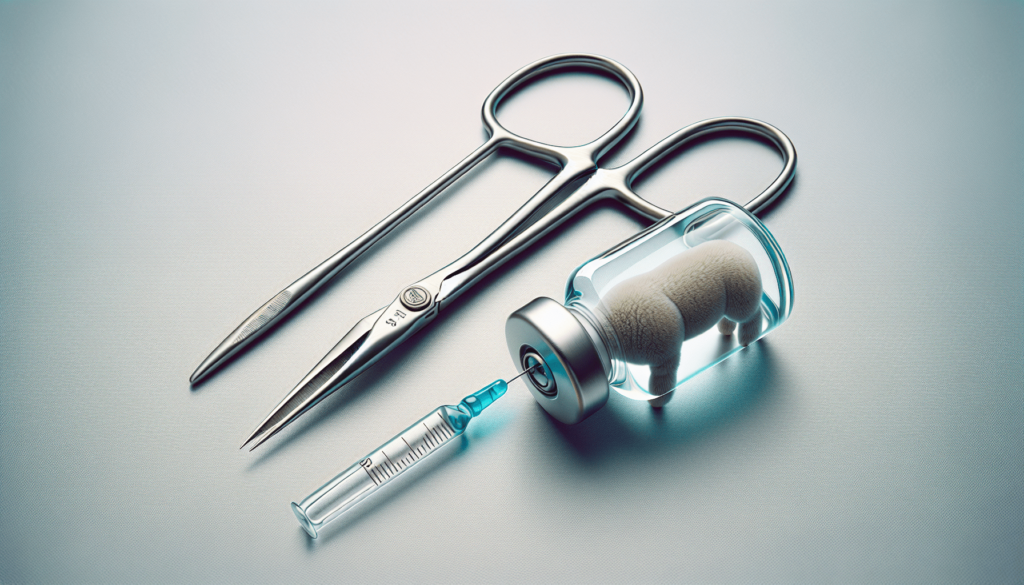
Are you curious about whether males get neutered? Engaging your community in animal protection is an effective way to raise awareness and make a real difference. To mobilize your community around animal welfare issues, there are several strategies you can employ. But let’s focus on one important aspect: do males get neutered? Stay tuned as we explore this topic and shed light on the matter.
What is neutering?
Definition of neutering
Neutering refers to the surgical procedure performed on male animals to remove their reproductive organs, rendering them unable to reproduce. This includes removing the testicles in males, which are responsible for producing sperm and the hormone testosterone.
Purpose of neutering
The primary purpose of neutering is to control the animal population by preventing unwanted pregnancies. Additionally, neutering offers various behavioral and health benefits for male animals, leading to a happier and healthier life for them.
Neutering in male animals
Understanding the concept of neutering in males
Neutering male animals involves removing the testicles through a surgical procedure, known as orchiectomy. By doing so, the production of sperm and testosterone is halted. This helps mitigate behavioral and health issues that may arise due to the presence of reproductive hormones in the body.
Procedure of neutering male animals
During the neutering procedure, the animal is placed under general anesthesia to ensure that they are unconscious and feel no pain. An incision is made in the scrotum, and the testicles are carefully removed. The incision is then sutured, and the animal is closely monitored during recovery.
Benefits of neutering male animals
Neutering male animals comes with a range of benefits. Firstly, it eliminates the risk of unwanted pregnancies, contributing to effective population control. Neutering also reduces the chances of certain behavioral issues, such as aggression and roaming tendencies. Additionally, it offers health advantages by lowering the risk of certain diseases, including testicular cancer and prostate problems.

Common misconceptions about neutering male animals
Belief that male animals do not need to be neutered
One common misconception about neutering is that male animals do not need to undergo the procedure since they do not give birth. However, male animals can still impregnate females, leading to unwanted litters. Neutering male animals is crucial in controlling the animal population and preventing the birth of more animals than the available resources can sustain.
Perceived negative impacts of neutering male animals
Another misconception is that neutering negatively affects the behavior and overall well-being of male animals. However, numerous studies have shown that neutering has positive effects on behavior and health. While there may be temporary changes in behavior immediately after the procedure, these are typically minor and outweighed by the long-term benefits.
Importance of neutering male animals
Population control
Neutering plays a vital role in population control. By preventing unplanned pregnancies, neutering helps reduce the number of animals in shelters and stray populations. This, in turn, reduces the strain on resources and ensures that animals receive the care they need.
Behavioral benefits
Neutering can help address various behavioral issues in male animals. It can reduce aggression, territorial marking, and roaming tendencies. Male animals tend to exhibit calmer and more predictable behavior after being neutered, making them easier to train and handle.
Health advantages
Neutering male animals also provides several health benefits. It eliminates the risk of testicular cancer, which is more prevalent in intact males. Additionally, it reduces the likelihood of prostate problems and certain infections. Neutering can also prevent injuries and accidents that may occur due to aggressive behavior driven by reproductive hormones.

Facts about neutering male animals
Effectiveness of neutering
Neutering is a highly effective method of contraception for male animals. It almost guarantees the prevention of unwanted pregnancies. However, it is vital to note that some individuals may still exhibit reproductive behaviors for a short time after the procedure while the hormones dissipate from their system.
Age at which neutering can be done
Male animals can generally be neutered at any age, but the ideal time varies. For dogs, the procedure is often performed between the ages of 6 to 9 months, before they reach sexual maturity. Cats can be neutered as early as 8 to 12 weeks of age, while rabbits, guinea pigs, and ferrets should be neutered around 4 to 6 months. It is recommended to consult with a veterinarian to determine the optimal age for neutering based on the specific species and individual circumstances.
Recovery process and aftercare
After the neutering procedure, male animals require proper care during their recovery. It is essential to limit their physical activity and provide a quiet and comfortable environment for healing. The incision site should be monitored for any signs of infection, and any concerns should be promptly addressed by a veterinarian. Additionally, it may be necessary to prevent the animal from licking or biting the incision site to avoid complications.
Neutering male dogs
Benefits specific to dogs
Neutering male dogs offers numerous benefits specific to their breed. It greatly reduces the risk of testicular cancer and decreases the incidence of benign prostatic hyperplasia, a condition characterized by the enlargement of the prostate gland. Neutering also minimizes the chances of certain aggressive behaviors, such as dog aggression and territorial marking.
Procedure and considerations for dog neutering
The procedure for neutering male dogs involves the removal of the testicles, either through a traditional incision or a less invasive laparoscopic technique. The type of procedure performed depends on the dog’s breed, age, and overall health. It is important to consider these factors and consult with a veterinarian to determine the most suitable approach for dog neutering.
Neutering male cats
Benefits specific to cats
Neutering male cats offers several benefits, including the prevention of testicular cancer and decreases in aggressive behaviors such as spraying and fighting. It also reduces the chances of the male cat wandering far from home in search of a mate, which can lead to accidents and injuries.
Procedure and considerations for cat neutering
The procedure for neutering male cats involves the removal of the testicles through a small incision made in the scrotum. This ensures that the cat is rendered infertile and eliminates the production of testosterone. Cat neutering is a relatively straightforward procedure, and most cats recover quickly. However, it is important to monitor the incision site and provide appropriate aftercare to ensure a smooth recovery.
Other male animals that can be neutered
Rabbits
Male rabbits can also benefit from neutering. Aside from preventing unwanted litters, neutering reduces the risk of reproductive cancers in rabbits, such as testicular and prostate cancer. It can also help minimize aggressive behaviors and improve litter box habits.
Guinea pigs
Neutering male guinea pigs is commonly done to prevent unwanted pregnancies and reduce aggressive behaviors. It can also decrease the incidence of conditions like bladder stones and tumor development.
Ferrets
Neutering male ferrets is essential to prevent potentially life-threatening conditions such as adrenal gland disease and prostatic enlargement. It also helps manage aggressive behaviors and reduces the strong musky odor commonly associated with intact male ferrets.
Effect on animal behavior
Reduction in aggressive behavior
Neutering male animals often leads to a reduction in aggressive behaviors. Without the influence of testosterone, animals tend to exhibit less territorial behavior, aggression towards other animals, and aggression towards humans. This can make them more sociable and easier to manage as pets.
Decreased roaming tendencies
Another behavioral benefit of neutering is a decrease in roaming tendencies. Intact male animals may feel compelled to stray from home in search of a mate, increasing the risk of accidents, injuries, and loss. Neutering helps mitigate this behavior, allowing animals to remain safer within their home environment.
Marking behavior
Male animals often engage in territorial marking by urinating in various locations. Neutering can significantly reduce this behavior, preventing the strong odor associated with marking and making the animal more pleasant to have indoors.
Conclusion
Neutering male animals is a crucial aspect of responsible pet ownership. It helps control the animal population, improves behavior, and offers various health benefits. By understanding the importance and advantages of neutering, pet owners can contribute to a healthier and happier animal community while minimizing the burden on shelters and resources.
Encouraging responsible pet ownership
Promoting the neutering of male animals is essential in advocating responsible pet ownership. Pet owners should be educated about the benefits of neutering and the appropriate age for the procedure. By spreading awareness, supporting local animal welfare organizations, and encouraging others to neuter their male animals, we can collectively make a positive impact on animal welfare and create a more compassionate and sustainable society.







